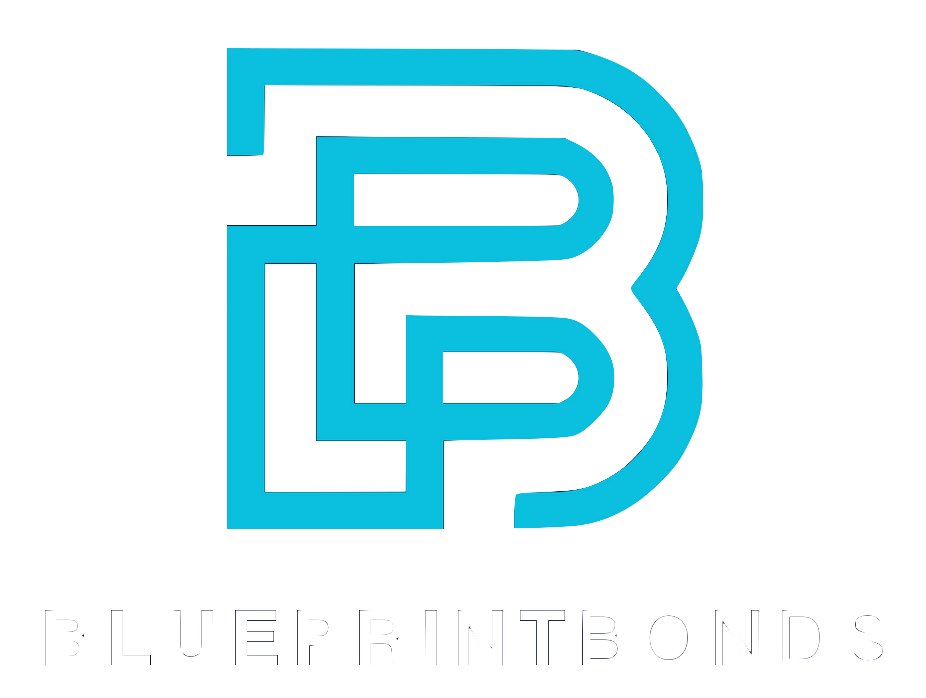When embarking on a construction project, understanding bonding requirements is crucial for contractors and project owners alike. Surety bonds serve as a financial guarantee that projects will be completed according to contract terms, protecting all parties involved. This article unpacks the essentials of bonding requirements, why they matter, and how they impact contractor onboarding processes.
With public and private construction projects increasingly relying on surety bonds to mitigate risk, contractors must be well-versed in these requirements from the outset. According to an Ernst & Young study, bonded projects consistently outperform unbonded ones, showing lower default rates and faster completion times. This makes bonding a cornerstone of project success and economic value.
What Are Surety Bonds and Why Are They Required?
Surety bonds are contracts involving three parties: the project owner (obligee), the contractor (principal), and the surety company. The bond guarantees that the contractor will fulfill their contractual obligations. If the contractor fails, the surety steps in to cover financial losses or arrange for project completion. This mechanism not only protects the project owner but also ensures that the contractor is incentivized to adhere to the terms of the contract, as their reputation and future business opportunities hinge on their performance.
Bonding requirements are often stipulated in public works contracts and increasingly in private projects. They serve as a risk management tool, ensuring that contractors are financially capable and committed to delivering quality work on time. This is especially important given that unbonded projects are statistically more likely to default—by as much as ten times—compared to bonded projects. The presence of a surety bond can also enhance the contractor's credibility, making it easier to secure financing and win new contracts, as it demonstrates a commitment to accountability and reliability.
For contractors onboarding onto new projects, understanding these requirements upfront is essential to avoid delays and ensure compliance. Many public owners now require subcontractors to be bonded or enrolled in the general contractor’s Subcontractor Default Insurance (SDI) program, emphasizing the growing importance of bonding throughout the project hierarchy. This trend reflects a broader shift in the construction industry towards increased scrutiny and risk management practices. As the landscape evolves, contractors must stay informed about the latest bonding requirements and best practices to remain competitive. More details on these evolving requirements can be found at Byars Wright’s insights on subcontractor bonding.
Moreover, the process of obtaining a surety bond can vary significantly depending on the contractor's financial history, creditworthiness, and the specific requirements of the project. Surety companies typically conduct thorough assessments, including evaluating the contractor's past performance, financial statements, and even their management practices. This rigorous vetting process ensures that only qualified contractors are able to secure bonds, thus minimizing the risk of project delays and failures. As a result, contractors may find that investing time and resources into improving their financial health and operational efficiency can pay off significantly when it comes to bonding opportunities.
In addition to the financial implications, surety bonds also foster a culture of accountability within the construction industry. By mandating bonding, project owners encourage contractors to maintain high standards of workmanship and ethical practices. This not only protects the interests of the project owners but also contributes to the overall integrity of the construction sector. As stakeholders increasingly recognize the value of surety bonds, the demand for bonded contractors is likely to rise, further solidifying the role of bonding as a cornerstone of responsible project management.
Types of Bonds Commonly Required in Construction
Contractors should be familiar with the three primary types of surety bonds commonly required:
- Bid Bonds: These guarantee that a contractor will enter into the contract at the bid price if awarded.
- Performance Bonds: These ensure the contractor completes the project according to the contract terms.
- Payment Bonds: These guarantee that subcontractors and suppliers will be paid.
Performance bonds, in particular, are a critical component of risk mitigation. Their cost varies depending on project size, typically ranging from 2% of the total contract cost for smaller projects to as low as 0.5% for very large projects valued over $50 million. This tiered premium structure helps balance affordability with the security provided by the bond.
Understanding these costs and requirements helps contractors plan their bids and financials more accurately, avoiding surprises during onboarding. The Federal Highway Administration provides a detailed overview of these premium ranges in their research on infrastructure bonding costs.
In addition to the financial implications, the requirement for these bonds can also affect a contractor's reputation and marketability. Clients often view the presence of surety bonds as a sign of reliability and professionalism, which can lead to more business opportunities. Furthermore, the bonding process itself can serve as a form of pre-qualification, as surety companies typically conduct thorough background checks and assessments of a contractor's financial stability and past performance before issuing bonds.
Moreover, the landscape of construction bonding is evolving with the increasing complexity of projects and the growing emphasis on sustainability and safety. New types of bonds, such as environmental performance bonds, are emerging to address specific project risks associated with environmental impacts. These bonds ensure that contractors will adhere to environmental regulations and restore sites post-construction, reflecting a broader commitment to responsible building practices. As the industry continues to adapt, staying informed about these developments can provide contractors with a competitive edge in securing projects and maintaining compliance.
Economic and Project Performance Benefits of Bonding
Beyond contractual compliance, surety bonds deliver significant economic value and enhance project outcomes. Lee Covington, president and CEO of the Surety & Fidelity Association of America (SFAA), emphasizes that “surety bonds deliver exceptional economic value for vital American infrastructure projects,” highlighting their role as sound public policy.
Bonded projects tend to have better financial stability and lower risk of contractor default. The Ernst & Young report confirms that bonded portfolios outperform non-bonded ones, with faster completion times and fewer disruptions. This reliability is crucial for public infrastructure, where delays can have widespread economic and social impacts.
A notable example is the reconstruction of the I-35W bridge in Minneapolis. Valued at $234 million, the project was completed in just 11 months—three months ahead of schedule—thanks in large part to comprehensive performance and payment bonds that ensured contractor accountability and financial security throughout the process.
Additionally, the use of surety bonds fosters a competitive environment among contractors, as it encourages them to maintain high standards of quality and efficiency to secure bonding. This competitive edge not only leads to better project outcomes but also promotes innovation within the construction industry. Contractors are incentivized to adopt new technologies and practices that can further enhance project delivery, thereby contributing to the overall advancement of infrastructure development.
Moreover, the economic ripple effects of bonded projects extend beyond the immediate construction site. By ensuring timely completion and financial reliability, these projects can stimulate local economies through job creation and increased business for suppliers and subcontractors. For instance, when a major infrastructure project is completed on time, it can lead to improved transportation networks, which in turn can boost local commerce and enhance community connectivity. This interconnectedness illustrates the profound impact that surety bonds can have on both project performance and broader economic health.
Contractor Qualification and Risk Management in Bonding
Contractor qualification is becoming a central pillar of risk management in construction projects. Project owners are increasingly scrutinizing contractors’ financial health, safety records, and experience before issuing bonds or awarding contracts.
Colton McKinney of Pearson Safety Solutions notes that “contractor qualification is becoming a central pillar of how project owners manage risk, verify readiness and meet rising insurance expectations.” This trend means that bonding is not just about financial guarantees but also about demonstrating a contractor’s overall capability and reliability.
For contractors, this means that onboarding packets often include detailed documentation beyond just bonding certificates—such as safety programs, past project performance, and insurance coverage. These comprehensive evaluations help surety companies assess risk and determine bond eligibility, ultimately protecting all parties involved in the project.
Moreover, the emphasis on contractor qualification is reshaping the competitive landscape of the construction industry. Contractors are now motivated to invest in robust safety training programs and maintain transparent communication with project owners to enhance their reputations. This shift not only fosters a culture of safety and accountability but also encourages contractors to adopt innovative practices that can lead to improved project outcomes. As a result, the construction industry is witnessing a gradual transformation where quality and reliability take precedence over mere cost considerations.
Additionally, the integration of technology plays a significant role in this evolving paradigm. Many contractors are leveraging software solutions to streamline their qualification processes, enabling them to present their credentials more effectively. For instance, digital platforms can facilitate the collection and organization of essential documents, making it easier for surety companies to conduct thorough evaluations. This technological advancement not only expedites the bonding process but also enhances transparency, allowing project owners to make more informed decisions based on real-time data and analytics.
How Bonding Requirements Affect Subcontractors
Subcontractors play a vital role in construction projects, and bonding requirements increasingly extend to them as well. Public owners are now requiring subcontractors to either secure their own bonds or be enrolled in the general contractor’s Subcontractor Default Insurance (SDI) program.
This shift aims to reduce project risk by ensuring that subcontractors are financially backed and accountable. It also helps prevent common issues such as payment disputes and work stoppages. For subcontractors, understanding these requirements early in the onboarding process is critical to maintaining eligibility and smooth project flow.
Contractors managing subcontractors must be prepared to provide clear guidance and support to meet these bonding or insurance enrollment requirements, fostering stronger collaboration and project stability.
Moreover, the bonding process itself can serve as a litmus test for the financial health and reliability of subcontractors. By requiring bonds, general contractors and project owners can assess the subcontractor’s creditworthiness and operational history. This not only protects the project from potential financial pitfalls but also encourages subcontractors to maintain high standards of performance and reliability. As a result, subcontractors may find themselves investing more in their business practices and financial management to meet these bonding criteria, ultimately leading to a more robust and competitive industry.
Additionally, the implications of bonding requirements extend beyond just financial security. They can influence the subcontractor's ability to secure future work. A strong bonding history can enhance a subcontractor's reputation in the industry, making them more appealing to general contractors and project owners. Conversely, a failure to meet bonding requirements may limit opportunities and hinder growth prospects. Therefore, subcontractors must not only comply with these requirements but also view them as an opportunity to strengthen their market position and build lasting relationships within the construction ecosystem.
Future Trends: Technology and Trust in Construction Bonding
Emerging technologies, including AI-powered construction robots (cobots), are beginning to influence project risk profiles and bonding considerations. A recent nationwide survey of 600 AEC industry practitioners found that safety and reliability are significant factors driving the adoption of these technologies.
As construction processes evolve, bonding companies and project owners are likely to incorporate assessments of technological integration and safety protocols into their qualification criteria. This could lead to new standards for bonding eligibility that reward contractors who leverage advanced tools to enhance project safety and efficiency.
Staying informed about these trends will be essential for contractors to maintain competitiveness and compliance in future projects.
Moreover, the integration of Building Information Modeling (BIM) alongside AI and robotics is set to revolutionize the construction landscape. BIM allows for real-time collaboration among stakeholders, enabling better visualization and planning of projects. This not only minimizes errors but also fosters transparency, which is critical in building trust between contractors and bonding companies. As these technologies become more prevalent, bonding agencies may require detailed BIM submissions as part of the bonding process, ensuring that all parties are aligned on project expectations and risks.
Additionally, the rise of data analytics in construction is another trend that cannot be overlooked. By harnessing vast amounts of data collected from job sites, contractors can gain insights into productivity, safety incidents, and resource allocation. This data-driven approach not only enhances decision-making but also strengthens the case for bonding by demonstrating a contractor's commitment to continuous improvement and risk management. As the industry moves towards a more data-centric model, bonding companies may increasingly favor contractors who can provide robust data analytics as part of their bonding applications.
Conclusion: Navigating Bonding Requirements in Contractor Onboarding
Bonding requirements are a fundamental aspect of contractor onboarding that directly impact project success, financial security, and risk management. Understanding the types of bonds, their costs, and the evolving expectations around contractor qualification and subcontractor participation is vital.
Contractors who proactively address bonding requirements position themselves as reliable partners capable of delivering projects on time and within budget. With bonded projects statistically outperforming unbonded ones by significant margins, bonding remains a critical tool for safeguarding investments and ensuring quality construction outcomes.
For those entering the construction industry or managing onboarding processes, staying current with bonding policies and leveraging expert insights will help navigate this complex but essential landscape effectively.
Learn more about the economic benefits and performance advantages of surety bonding through the
Ernst & Young report and explore subcontractor bonding requirements at
Byars Wright.




